My calendar reads fall. Most of the growth that trees will be doing this year has been done, caterpillars are becoming more noticeable, and orb weaver spider webs are beginning to appear in the morning mist. There’s no turning back now, the season is changing.
What have I been seeing on my walks around the outdoor exhibits? Continue reading and you shall see.
One morning as I ventured into Explore the Wild, Animal Keeper Katie pointed out to me a large moth clinging to the wall of the vending area. It was a Pandorus sphinx moth, a beautifully camouflaged insect caught out in the daylight after a night of mate-seeking adventure.
Most sphinx moth caterpillars have a “horn” at the end of their abdomens. You, no doubt, have seen a tobacco or tomato hornworm. They are sphinx moth caterpillars. Unfortunately, I don’t have a photo of a Pandorus sphinx moth caterpillar but I do have the adult moth (below), the same individual Katie pointed out to me..
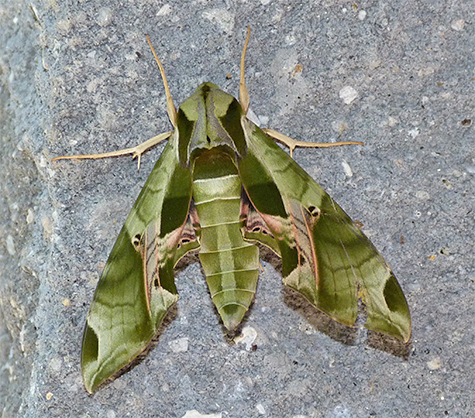
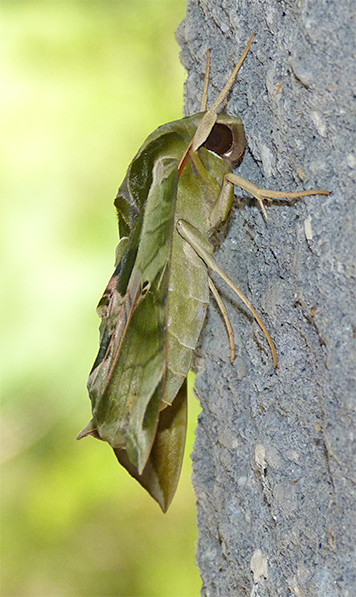
The host plants, the plants the adult lays eggs on and the caterpillars eat, are grapes and Virginia creeper. Both plants are well represented here at the Museum.
Close by on the wall, was another sphinx moth. The smaller, more monotoned, but no less cryptically marked plebeian sphinx moth.
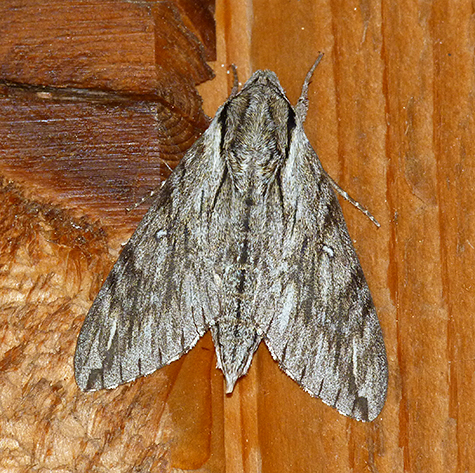
Two plants which host the plebeian sphinx are passionflower and trumpet vine. Both plants are no more than thirty feet from where this moth chose to roost.
Later in the day I came across another moth species, this time in caterpillar form. It was a variable oakleaf caterpillar, which is the larval stage of a nondescript gray moth. The moth belongs to a family of moths called prominents.
The name prominent comes from the fact that the adult moth has tufts of scales on the back edge of the forewing which stand up prominently while the moth is perched or stationary. I’ve never looked close enough at one of the moths to actually see those tufts of scales, but I’ll take it as fact that they exist.
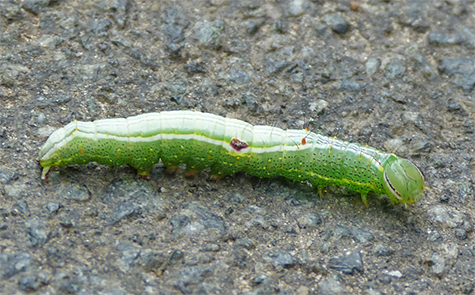
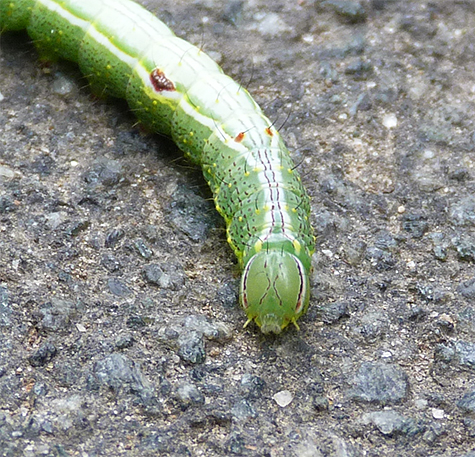
The next day I saw another caterpillar crossing the path, this one was pink. I searched for an identity to the caterpillar but was unable to satisfy myself as to what exactly it was. It looked like a prominent. Most prominents share a particular body shape, and, as you can see in the photo above, they often have light lines on the sides of the back (dorsolateral lines or stripes) and a line down the center of the back (dorsal line or stripe). The two dorsolateral stripes converge on the thorax.
I could just make out faint lines in the right places for this pink caterpillar to be a prominent, and I’ve read that some prominents become pink just before pupation. So, going along with my first impression, I think this wandering larva is indeed a prominent. It may even be a variable oakleaf prominent. Anyone like to confirm or refute?
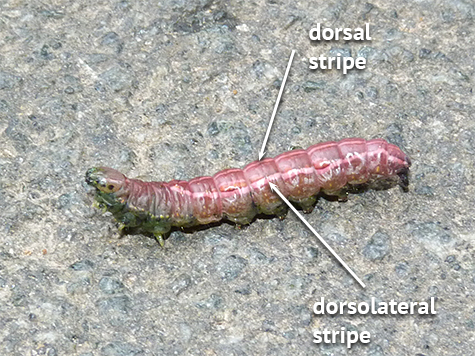
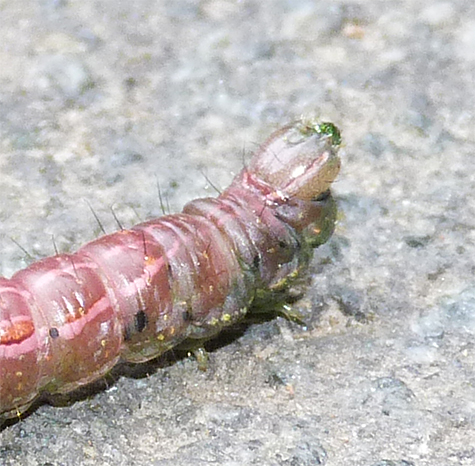
That’s it for now. I’ll be keeping my eyes and ears opened for more interesting creatures wandering about the Museum’s landscape, hope you do the same!
I agree with you on the pink caterpillar, it probably is a variable oakleaf prominent. I’ve seen them do that too.
Looks like a drab prominent